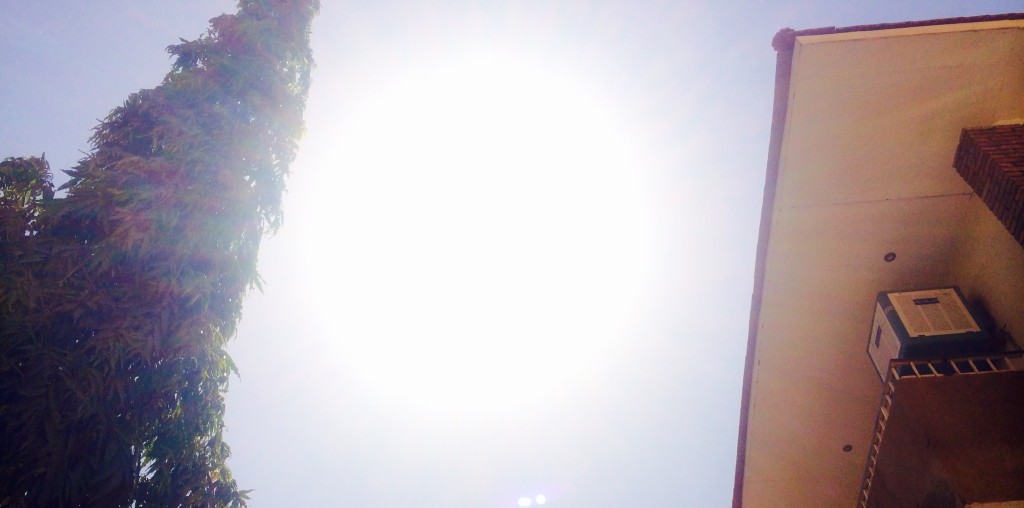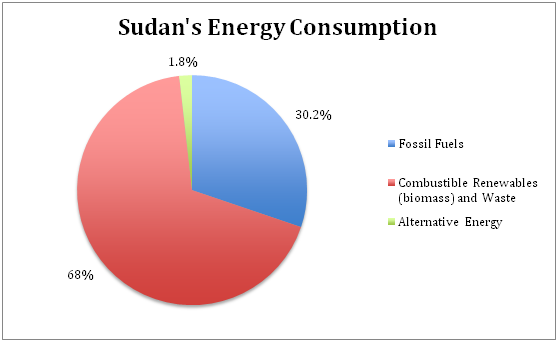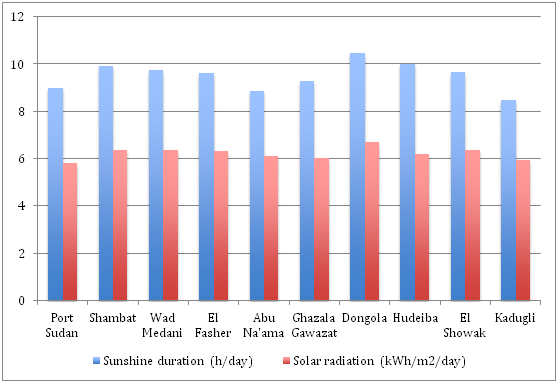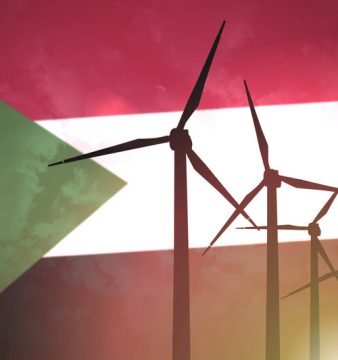The case of photovoltaics in Sudan
During the summer season in Sudan there’s a significant increase in electricity demand, hence a significant increase in power outages; yet despite their much rarer occurrences, they’re still a notable hindrance. The argument goes that Sudan has a lot of Sun, so solar power is the answer. Is it?
Sudan has a vast range of climates, ranging from tropical in the south to desert regions in the northern part of the country. It has an area of 1.9 million square kilometers. Sudan’s vast area and climate affords it several advantages in the agricultural production and processing.
During the oil years (1999 – 2011), the Sudanese government mismanaged the country’s agricultural sector – once the heartbeat of the economy – blinded by the easy money being brought in by the oil. Now, after the secession of South Sudan, and the loss of 75% of its oil resources, Sudan sits on an immense amount of foreign debt, no foreign currency reserves in the central bank, and a malfunctioning economy. Last-ditch efforts are being made to revamp the agricultural industry. That being said, the oil boom not only brought in dollars, but easy access to fuel.
One of the main factors affecting energy consumption in the country is urbanisation. The urban population was 11.4 million (33.2%) in 2011, a significant rise from just 11.3% in 1961. A constant rise in the urban population means increased demand for modern energy (electricity, oil and gas). The largest urban population of 5.7 million people are in the capital city, Khartoum. The increase in urbanization is predicted to continue as people head to more urban areas in search of jobs and a better standard of living. The rise in urbanization and the increase in the urban population will trigger an increase in per capita energy consumption, if current consumption trends persist. However, the energy consumption trends up to 2011 were dependent on a large supply of fossil fuels at cheaper prices. Now that Sudan will be a net oil importer, following the secession of South Sudan, energy based on fossil fuels will be more expensive and less readily available.
Sudan’s energy sector is highly dependent on fossil fuels and biomass. The dependence on fossil fuels is relatively recent and is due to the recent oil boom. The prevalent use of biomass on the other hand is mainly due to poverty and lack of access to grid electricity. It was estimated by the World Bank that 64.1% of the population doesn’t have access to electricity, with the national grid serving a mere 10%, with the rest depending on smaller local grids. The regions with no access to the grid often make do with diesel generators. The National Electricity Corporation, the national electricity utility company, provides electricity through two connected grids, the Blue Nile Grid and the Western Grid.
In 2009* Sudan consumed 183 TWh of energy, with only 30.2% accountable to fossil fuels. Combustible renewables and waste (biomass) account for 68% of Sudan’s energy consumption. Alternative energies such as hydro, solar and wind account for 1.8% of the total energy consumption, with hydro being the dominant alternative energy technology.
Sudan’s electricity production is dominated by hydropower, 47.8% (which constitutes 97.5% of the 1.8% share of alternative energy), and fossil fuels, 52.2%. Due to a lack of access to technologies because of Western imposed sanctions, Sudan’s electricity sector experiences very high power transmission and distribution losses; distribution losses account for almost 28% of the total electricity power output.
Solar Potential
Sudan has immense untapped solar resources for energy production. The use of renewable energy sources like solar is important for the future development of the country.
Solar energy use has several advantages over other renewable energy technologies. Solar panels and collectors are simple to operate, maintain and handle; they’re usually placed on rooftops or in open fields at an angle. Current solar technologies employed in Sudan include solar cookers and solar water heaters. Their applications are limited to rural areas or in the under developed parts of urban areas. However, solar photovoltaics (PV) are yet to be widely used in rural Sudan. Sudan has a mean annual solar radiation of 6.2 kWh per meter squared per day. The cities with highest solar radiation are in the northern and western parts of the country, namely Dongola, 6.7 kWh per meter squared per day, and El Fasher, 6.4 kWh per meter squared per day.
The numbers are promising; with an average of 9.5 hours of sunshine per day; this is almost one and half times that of the United Kingdom in June, a mere 6.9 hours. This number of sunshine hours means an average of almost 3,500 hours of sunshine per year. An average of 0.66 kWh per square meter per day per hour of sunshine in Sudan gives a staggering 2,300 kWh per square meter per year (to put things into perspective, a medium-income family in Sudan consumes 5,800 kWh of electricity per year). Taking into account current conversion efficiencies, dust, and the effects of high temperatures on the energy conversion efficiencies of solar panels, the actual amount converted into electricity will be significantly lower; but still, solar energy is extraordinarily abundant.
Should Sudanese Households go Solar?
Electricity consumption is dependent on income levels. On one side of the scale, poor households have no electricity consumption and rely on biomass for cooking, lighting and heat. Low-income households – with minimal appliances, including ceiling fans, lights and mobile phone chargers – consume around 600 kWh of electricity per year. Upper income households consume anywhere between 50,000 and 60,000 kWh of electricity per year. Given the current electricity price of 0.25 SDG per kWh (which is extremely cheap relative to the UK, 1.3** to 1.5 SDG per kWh, and the US, between 1 to 1.3 SDG per kWh depending on the state) household expenditure on electricity varies between 150 SDG to 200 SDG per year for low-income households, and between 14,000 SDG and 15,000 SDG per year for upper income households.
In the UK, due to the relatively high electricity prices, the use of solar panels in the household is justified in terms of the money saved with respect to the price of installation. According to the Energy Saving Trust, a typical 4 kW household PV system producing around 3,700 kWh of electricity a year, will generate income and save – according the system’s user’s eligibility to the Feed-In Tariffs – on average between 6,800 SDG and 7,000 SDG per year. Taking into account that the cost of installing the system varies between 55,000 SDG and 80,000 SDG, this gives a payback period of 8 to 11 years.
In Sudan, due to the lower cost of electricity, and arguably higher household electricity consumption with respect to income level, the payback period is around 13 to 15 years, with a possibility of being more than 25 years if we assume high import taxes. The installed capacities required for low-income, medium income, lower-upper income and upper income households are 0.3 kW, 3 kW, 10 kW and 30 kW respectively. A major point to make here is that medium income households in the UK require 4 kW of installed capacity, while their income equivalent in Sudan, lower-upper income households, require an installed capacity of 10 kW. Taking into account that installed capacity is calculated from the available sunshine hours – the higher the number of sunshine hours, the less installed capacity – it goes to show how much more electricity is consumed in Sudanese households, mainly due to higher average temperatures all year round.
Unfortunately, due to the instability in the country – the fluctuating price of the US dollar, the unstable fuel subsidies and instability in the peripheries – an investment with a promised payback period of 15 years (with 25 years making it a useless investment) is hardly enticing. It’s also true that in developing countries, of which Sudan is one, upfront capital is hard to come by. So unless there’s a government-backed scheme for loans or renewable energy subsidies, it seems photovoltaics is a bad investment for individual households.
* Most of the data available for Sudan is pre the recession. This causes some discrepancies.
** All currency conversions are done using the official rate of US$ 1 = 5.69 SDG.







